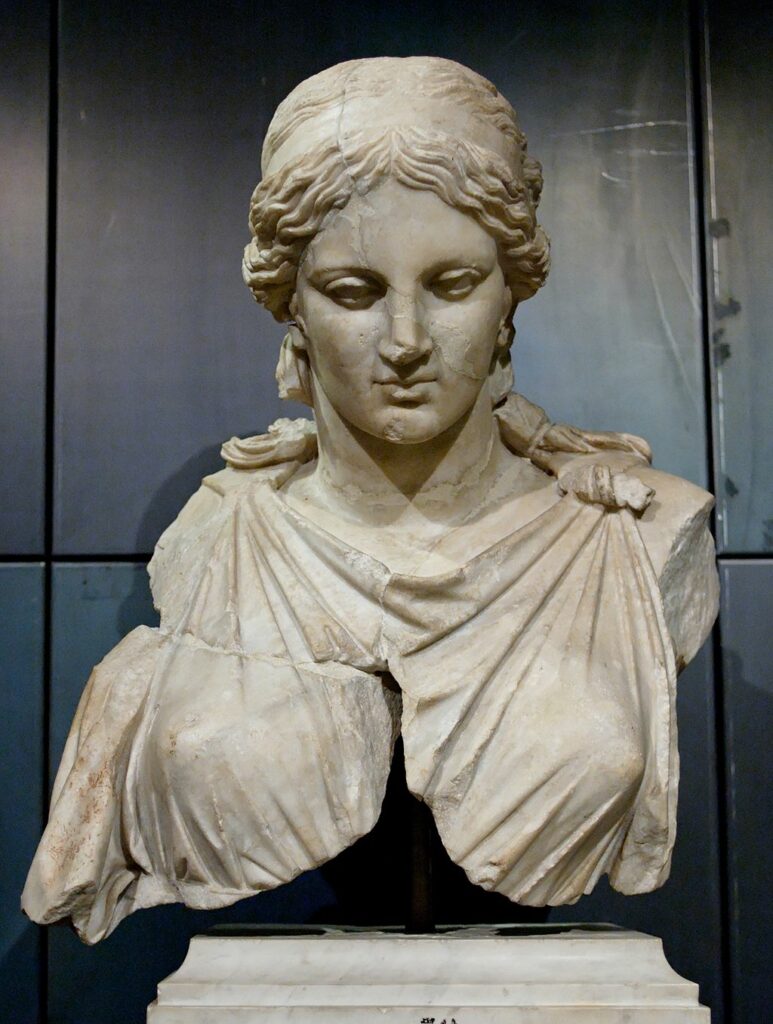Artemis Kephisodotos, Rome Musei Capitolini
DIANA. This was the Latin name of the goddess identified with the Greek Artemis of classical mythology. Daughter of Jupiter and Latona, she was twin sister of Apollo, and horror at the pains her mother endured at her birth is supposed to have made her averse to marriage. She was goddess of the moon and of hunting, and is generally portrayed as a huntress, with dogs in attendance. Her temple at Ephesus was one of the seven wonders of the world, and here worship of the 'virgin goddess' appears to have been fused with some kind of fertility-cult of the mother-goddess of Asia Minor. The temple was supported on 100 massive columns, some of which were sculptured. Tradition claims that her image fell there from the sky, and is thought to refer to a meteorite; Pliny tells of a huge stone above the entrance, said to have been placed there by Diana herself. Her worship was conducted by eunuch priests, called megabyzoi, and archaeologists have discovered statues depicting her with many breasts. The silversmiths who made small votary shrines, portraying the goddess in a recess with her lions in attendance, or possibly souvenir models of the temple, caused the riot when Paul was ministering there (Acts xix.23 - xx.1). Their cry of 'Great is Diana of the Ephesians' is attested by inscriptions from Ephesus which call her 'Artemis the Great'.
D. H. Wheaton, article on 'Diana' in The New Bible Dictionary (ed. J. D. Douglas), London 1962
Descendant of:
MYTHOLOGY AND THE CLASSICAL WORLD
Texts with this theme:


